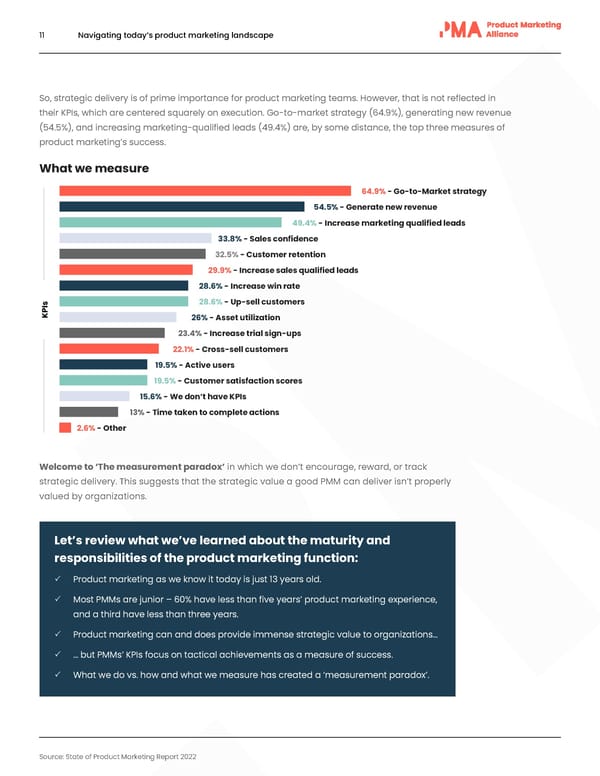11 Navigating today’s product marketing landscape So, strategic delivery is of prime importance for product marketing teams. However, that is not reflected in their KPIs, which are centered squarely on execution. Go-to-market strategy (64.9%), generating new revenue (54.5%), and increasing marketing-qualified leads (49.4%) are, by some distance, the top three measures of product marketing’s success. What we measure 64.9% - Go-to-Market strategy 54.5% - Generate new revenue 49.4% - Increase marketing qualified leads 33.8% - Sales confidence 32.5% - Customer retention 29.9% - Increase sales qualified leads 28.6% - Increase win rate KPIs 28.6% - Up-sell customers 26% - Asset utilization 23.4% - Increase trial sign-ups 22.1% - Cross-sell customers 19.5% - Active users 19.5% - Customer satisfaction scores 15.6% - We don’t have KPIs 13% - Time taken to complete actions 2.6% - Other Welcome to ‘The measurement paradox’ in which we don’t encourage, reward, or track strategic delivery. This suggests that the strategic value a good PMM can deliver isn’t properly valued by organizations. Let’s review what we’ve learned about the maturity and responsibilities of the product marketing function: 3 Product marketing as we know it today is just 13 years old. 3 Most PMMs are junior – 60% have less than five years’ product marketing experience, and a third have less than three years. 3 Product marketing can and does provide immense strategic value to organizations… 3 … but PMMs’ KPIs focus on tactical achievements as a measure of success. 3 What we do vs. how and what we measure has created a ‘measurement paradox’. Source: State of Product Marketing Report 2022
 Navigating today’s product marketing landscape Page 10 Page 12
Navigating today’s product marketing landscape Page 10 Page 12